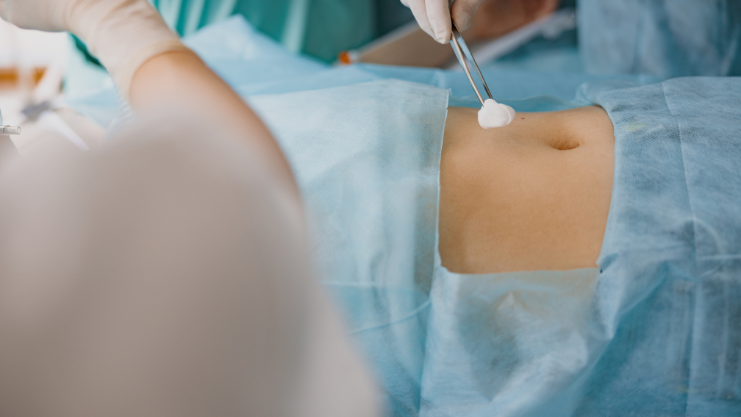
When a person is considering undergoing a Abdominoplasty, one of the most important decisions is related to the technique: to perform the procedure with drains or using a technique without drains? This choice can make a big difference in recovery, patient comfort and final results.
La Abdominoplasty without drains, which uses progressive tension sutures to prevent fluid accumulation, has gained popularity in recent years because it improves the postoperative experience and reduces some complications. However, the traditional tummy tuck with drains remains a widely used and effective technique, especially in cases of greater complexity.
Next, we will explore in detail the Differences between the two techniques, their benefits and limitations, how they influence recovery and what factors to consider together with your plastic surgeon —such as Dr. Allan Ceballos— to make the best decision.
La Abdominoplasty, also known as abdominal surgery or abdominal lipectomy, is a procedure that removes excess skin and fat from the abdomen, while reinforcing the weakened fascia of the abdominal muscles, causing the muscles to be separated. Its objective is to improve the shape of the torso, achieving a flatter and firmer abdomen.
After surgery, it is normal for the body to generate fluids (lymph and blood) in the operated area due to inflammation and the natural healing process. These fluids can build up in a space called “dead space” between skin and muscle tissue.
In the traditional technique, they are placed surgical drains, that is, thin tubes connected to small containers that allow these liquids to be evacuated. Thanks to them, the formation of seromas (bags of fluid that delay recovery) and the risk of infection is reduced.
The time of use varies between 5 and 10 days, depending on the volume of liquid that accumulates. Although effective, drains require specific care at home, which can be uncomfortable for the patient.
The modern alternative is the Abdominoplasty without drains, which uses progressive tension sutures. These sutures attach the skin to the muscle fascia at different points, closing the space where fluid would accumulate. Since there is no dead space, the placement of drains becomes unnecessary.
This method offers greater comfort during recovery and lower risk of infection, but requires a surgeon with experience and technical precision.
In both cases, the scar depends more on the suture technique and postoperative care than on the use of drains. However, those who choose the no-drain technique report greater satisfaction because their recovery is less uncomfortable.
Regardless of the technique used, the Abdominoplasty recovery requires discipline and medical care.
In the case of drains, it is essential to learn how to empty them and measure the volume of liquid. In the no-drain technique, the focus is on controlling skin tension and monitoring the formation of seromas.
The final decision does not depend only on the patient, but on the comprehensive assessment of the plastic surgeon. Dr. Allan Ceballos, with extensive experience in body contouring procedures, analyzes each case according to:
Its approach combines safety and aesthetics, using modern and personalized techniques so that each patient achieves a firm abdomen and a controlled recovery.
These innovations allow patients to enjoy more natural results with fewer complications.
The benefits include less pain, more comfort, and a lower risk of infections. The main disadvantage is that not all patients are ideal candidates, and there is still a low risk of seroma formation.
Traditional tummy tuck uses external drains to remove fluids, while the no-drain technique uses internal sutures that prevent fluid accumulation.
With drains, recovery usually takes 6 to 8 weeks. Without drains, the patient can return to activities sooner, usually between 4 and 6 weeks.
The cost may be similar, although some centers charge different rates due to technical complexity. The most important thing is to choose a certified surgeon with experience in both techniques.
Yes, in many cases, mini-abdominoplasty is performed without drains, since the volume of tissue removed is smaller and the risk of fluid accumulation is lower.
The choice between a Abdominoplasty with drains Or a Abdominoplasty without drains depends on multiple factors: the patient's state of health, the extent of the procedure, the quality of the tissues and, above all, the surgeon's experience.
Both techniques are safe and effective when performed by a certified specialist. While drains offer greater safety in extensive surgeries, the no-drain technique provides more comfort and accelerated recovery.
Dr. Allan Ceballos guides each patient to select the most appropriate option, ensuring a balance between aesthetics, safety and well-being in the process of abdominal transformation.